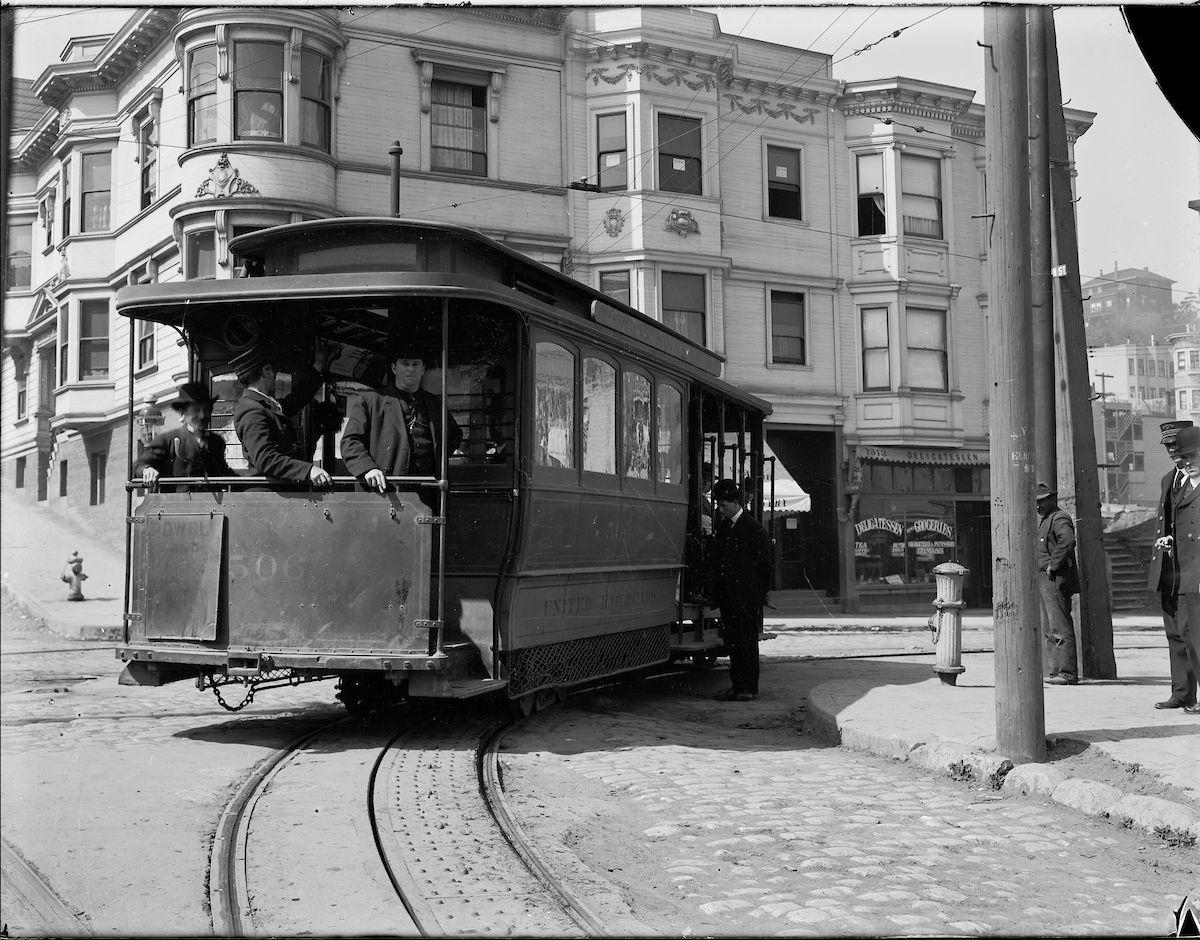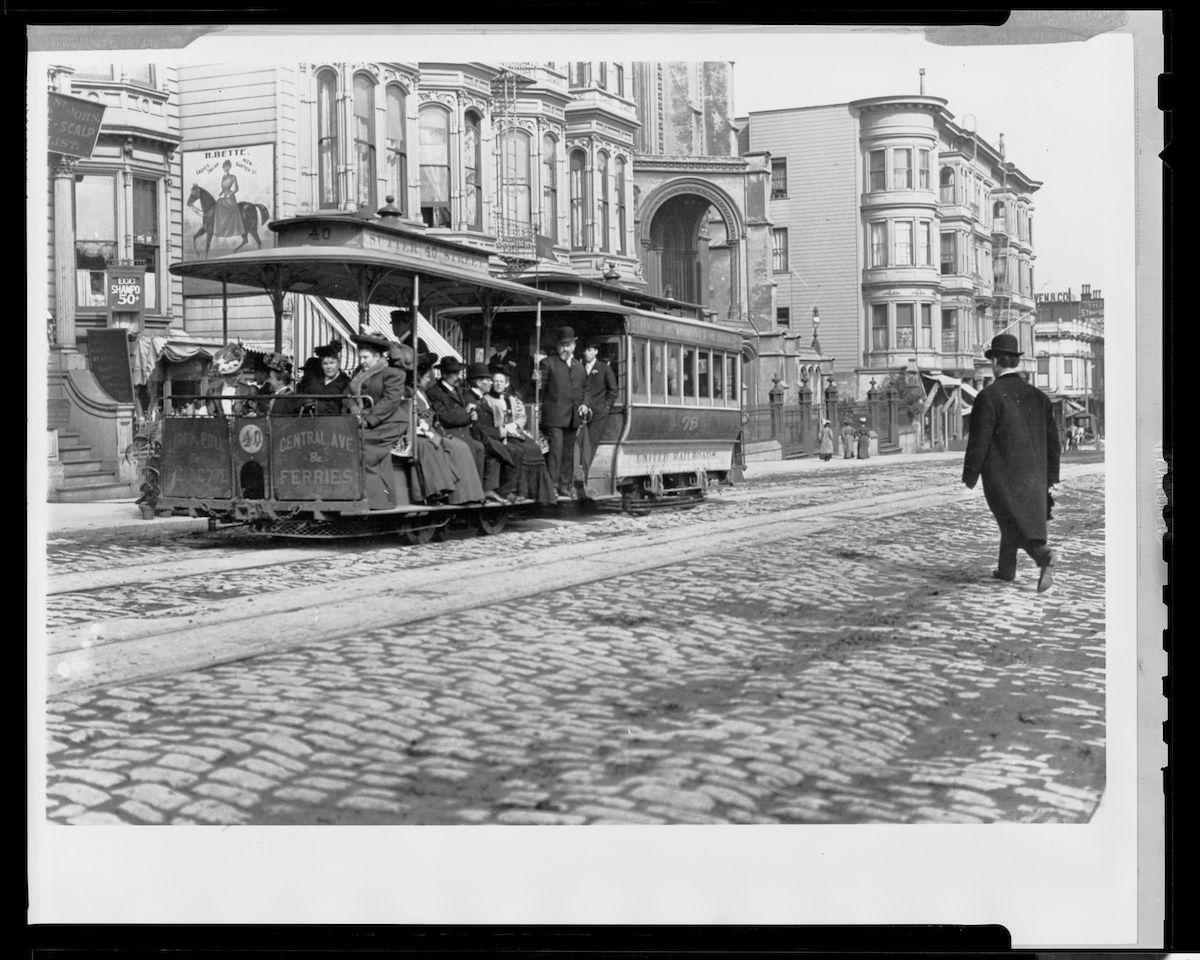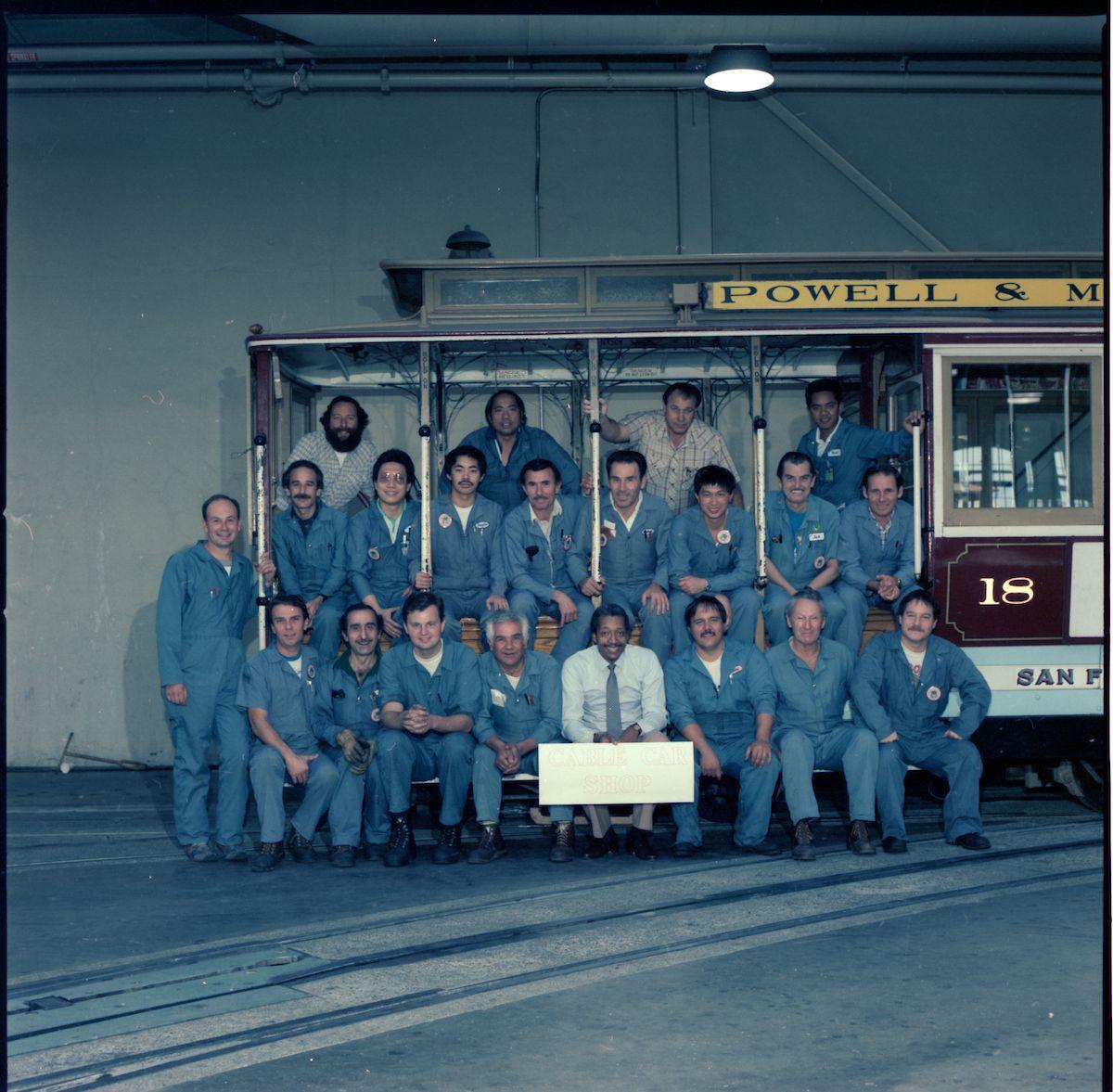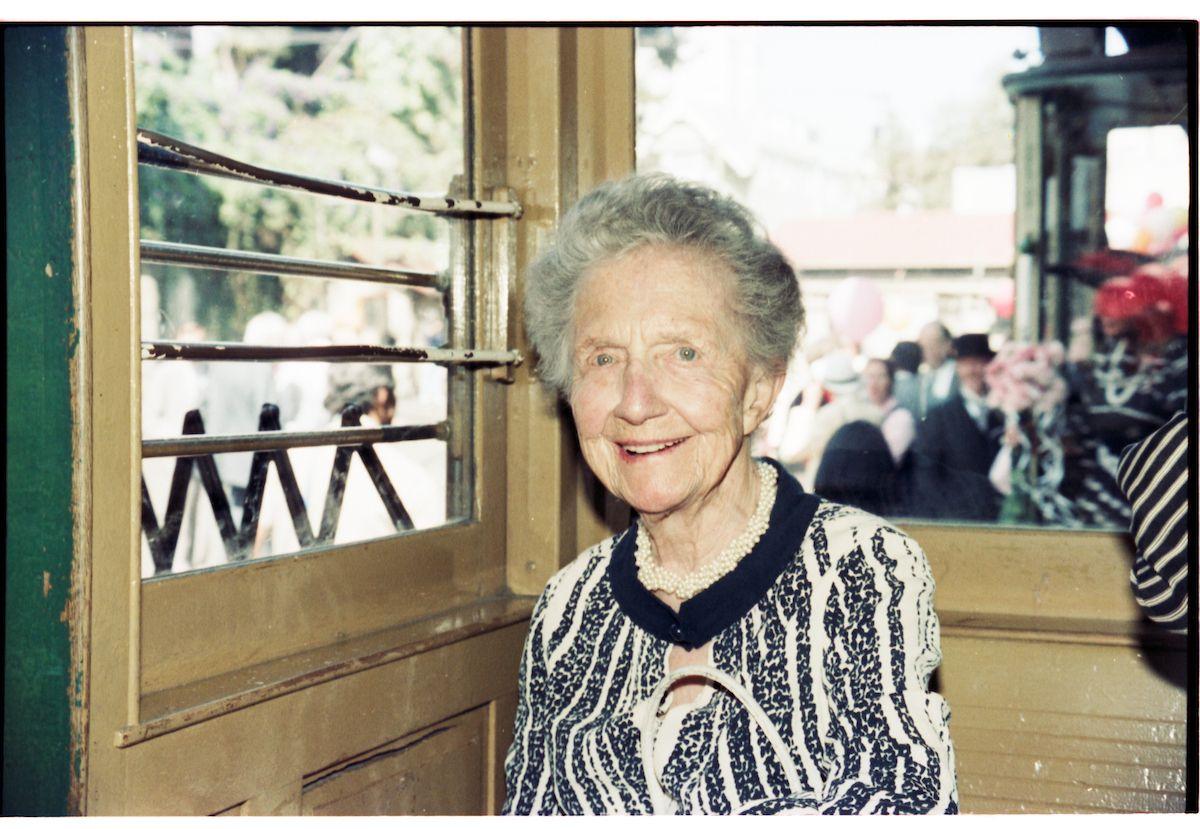
Annie Washington and Chanelle Smith are two of Muni’s newest cable car grips.
The Muni family is proud to introduce two of its newest cable car grips: Chanelle Smith and Annie Washington.
Earning the right to operate a cable car is challenging. Applicants must complete a month-long training course and pass a rigorous final exam. Only about 20% of applicants make the cut.
When Smith and Washington were certified, they became the fifth and sixth women to ever hold the title of cable car grip.
Keep reading to find out why cable car operators are called “grips.” You’ll also meet the first woman to ever do the job and learn about other women who have contributed to San Francisco’s cable car system.

A cable car turns the corner at Jackson and Mason streets in 1910.
Getting a ‘grip’: understanding Muni’s most iconic role
Welcoming new grips is always a cause for celebration at Muni.
For starters, it is a historically significant role. San Francisco is the only city in the world with a cable car system that still serves regular commuters. These special vehicles have been on our streets for more than 150 years.
On top of that, the job is both physically and mentally demanding. Cable car operators are also known as “grips,” because they use a large mechanical lever to control the vehicle. This lever grips and releases a metal cable, which is constantly moving beneath the cable car tracks. When the grip is engaged, the cable car moves forward. To stop the vehicle, the operator releases the grip and activates the brakes, using another lever and a foot pedal.
Operators must have the physical strength to perform these essential duties. They must also remain constantly alert to traffic conditions and memorize a unique set of cable car rules. Plus, they need to stay in sync with the conductor, who stands at the back of the cable car to take tickets and perform other duties.

Archival photo of passengers on a San Francisco cable car, circa 1905.
In the driver’s seat: Women join Muni as grips
Cable cars are one San Francisco’s most recognized symbols. They have been rumbling through our streets since the early 1870s. For most of that time, there were no women grips on our cable cars.
Scroll through the SFMTA’s Photo Archive and you will find many pictures of male grips, male conductors and male mechanics at work. When women do appear in archival cable car imagery, they are usually just passengers along for the ride.

Archival photo of a cable car shop crew in 1986.
That changed in 1998, when Fannie Mae Barnes became Muni’s first ever gripwoman. You can learn more about Barnes in our Breaking Glass Ceilings Halfway to the Stars blog post.
In the years after, more women followed in Barnes’ footsteps, including Willa Johnson in 2010, Amber Jones in 2016 and Catrena Brown in 2022. Historically, it has also been rare for women to work as conductors. However, more women have served as cable car conductors than grips.
Both Smith and Washington said they were thrilled to join Muni’s small but growing club of women grips.

Fannie Mae Barnes, Muni’s first gripwoman, presents Annie Washington with cable car grip covers at Washington’s certification ceremony on May 10, 2024.
“I’m on top of the world,” Washington said during a recent interview with Melissa Culross, host of the SFMTA’s Taken with Transportation podcast. “It feels great.”
Smith, who also spoke to Culross recently, echoed Washington’s enthusiasm for their shared accomplishment. “I feel in control,” she said. “I feel like, as a woman, I can do it, too.”
To top it all off, Smith was clearly pleased with the new nickname she earned by becoming Muni’s fifth gripwoman: “Chanelle No. 5.”

Chanelle Smith with her hand on the grip lever of a Muni cable car.
Making history: women help Muni move forward
Although the role of grip has historically been held by men, women have been an important part of San Francisco’s cable car system for generations.
In the late 1940s, Mayor Roger Lapham proposed eliminating the city’s cable cars. Thankfully, a local woman named Friedel Klussmann created the Citizens’ Committee to Save the Cable Cars. Klussmann’s efforts were instrumental in keeping the historic vehicles in service. You can read more about her work in our Friedel Klussmann and the Fight to Save the Cable Cars blog.

Friedel Klussmann on a Muni cable car in 1982. Klussmann helped prevent the cable car system from being dismantled in the 1940s.
In 1965, Mona Hutchin challenged an unspoken rule that banned women from standing on the outside of moving cable cars. That year, Hutchin stood on the running board of a cable car and refused to move inside. Hutchin’s act of civil disobedience helped put an end to the discriminatory practice. You can learn the details in our blog, When Women Weren’t Allowed to Stand on the Outside of Cable Cars.
Today, Muni’s workforce is more diverse than ever before. People of all races, genders and identities serve in positions throughout the agency. Many women now work in departments that used to be only staffed by men. You can read about some of them in our collection of stories about women in the trades at Muni.